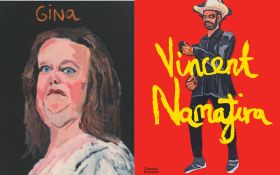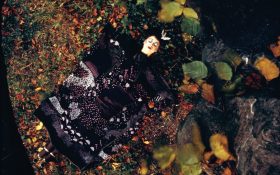With so many Academy-Award-nominated films this year stemming from successful books, from The Devil Wears Prada to Notes on a Scandal, it would be easy to believe the relationship between Hollywood and the book industry to be flourishing. Producers and writers are both winners as film rights rake in much-needed revenue and the reputation of a novel guarantees a certain level of box office recognition. But the Cussler/Anschutz trial, now raging in the US, has cast a different light on the situation.
Clive Cussler, author of thrillers about submarine scientist Dirk Pitt, is suing producer and Denver billionaire Philip Anschutz over the adaptation of his work Sahara and, as always, there are two sides to this story.
At first glance, sympathy may lie with the frustrated writer whose artistic integrity is compromised by the demands of Hollywood producers. Cussler claims that so many script and plot changes were made to the work that it was doomed to failure at the box office.
Artistic control is an inevitably thorny issue. Giles Foden was delighted by the adaptation of his novel The Last King of Scotland by Peter Morgan, who won a Bafta for his work. Foden, discussing “the commonly accepted wisdom that an adaptation is another entity to be judged by different standards to the original artwork”, goes on to comment that “only an idiot would think otherwise; but that doesn’t mean you are an idiot if you are unhappy with the way your book has turned out on screen.” The world of Hollywood adaptation is presented by Foden as one in which writers are “well paid for being routinely betrayed and demeaned.”
Perhaps Oscar-nominated author William Nicholson judged well then to turn down $1m for the film rights of his best-selling Wind Singer children’s trilogy. Nicholson, who was nominated for scripting the film Shadowlands and co-scripting Gladiator declined the offer because he wanted the film to remain in the imagination of the reader: “the minute a film is made,” he said, “a book dwindles away and becomes nothing”. The argument here is for a fundamental separation of the print and film media. Not only would this avoid the issue of adaptation, it would improve cultural diversity by encouraging the production of original work by scriptwriters.
But for Hollywood the adaptation of a successful book means a limitation of risk. A book is a known cultural quantity and the likely success of a film can be gauged by the sales figures of the novel. For Anschutz, this assumption is the crux of his countersuing claim against Cussler.
Anschutz is alleging that Cussler duped him into paying $10m for the film rights to Sahara by flagrantly inflating his book sales to more than 100m copies. Cries of amazement that any businessman would commit to such an investment without verifying figures are natural. To anyone who is familiar with the obscure system of presenting sales figures in the publishing industry, however, his claims are understandable.
Unlike the film and TV industries, where viewing figures and box office grosses are accurate, transparent and very quickly available, the complex nature of bookselling makes it difficult to judge how well a book is doing. A book sells slowly, over a long period of time, so that only lifetime sales present an accurate picture. A title deemed to be a bestseller may only have thrived in its first weeks of publication, to dwindle quickly into obscurity and leave a sizable number of unsold copies. The issue of returns complicates the issue further so that strong initial sales to bookshops aren’t a good indicator and only till sales figures, now mercifully available through Neilsen Bookscan, can be trusted.
Neilsen also oversees the book trade Gold & Platinum awards scheme, for which a Gold is awarded at 0.5 million copies and a Platinum at 1 million copies sold. Richard Knight, Managing Director of Nielsen BookScan highlights the more leisurely pace of bookselling explaining that “typically a good book will take about four to six months to go Gold and very few books reach Platinum in their first year of publication”. In these terms, the belief that Sahara, published in 1995, could have sold over 100m copies is ridiculous.
Still, the complexity of the system allows publishers to make generous and misleading claims. Albert Greco, a Fordham University economist who analyses business trends in the book world, explains the incentive behind this apparent misrepresentation: “The publishing business has never gone out of its way to report actual sales numbers because it has no real interest in doing so…We estimate that out of every ten hardcover adult books, seven lose money, two break even, and one is a hit. So of course this business is secretive about sales. Would you want to tell the world that 70 percent of your output is losing money?”
No matter what the outcome of the trial the clash offers a caution to producers and writers alike. Anschutz would argue that the film would have been successful, regardless of strength of adaptation, had the book sold 100m copies. However, this is a relationship that works best when a book is considered not on its statistical performance and with a narrow-minded approach to box-office success, but with a view to the artistic merit of the work and with a genuine insight into how well that will translate to the screen.




